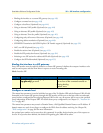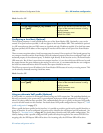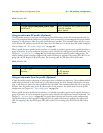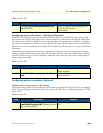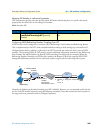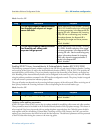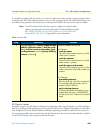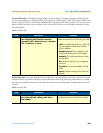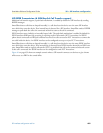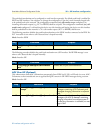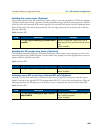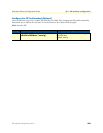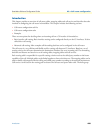
SIP interface configuration task list 451
SmartWare Software Configuration Guide 39 • SIP interface configuration
SIP REFER Transmission (& ISDN Explicit Call Transfer support)
Additional call transfer support, a push-back mechanism, is enabled by default for SIP interfaces by sending
REFER messages.
SmartWare detects calls that are looped internally, i.e. calls that leave the device over the same SIP interface
over which they enter the device. If an internal loop is detected for a SIP interface, SmartWare sends a REFER
message to push back the call to the connected network as soon as the call is connected.
ISDN interfaces react similarly to internally looped calls. The push-back mechanism is enabled by default for
ISDN interfaces (BRI ports) by accepting or rejecting explicit call-transfer (ECT) invocations. An ISDN
phone that is connected to a BRI port and that has two active calls can send an ECT invocation to connect the
two calls inside the device. An ISDN interface can be configured to accept or reject ECT invocations.
SmartWare detects calls that are looped internally, i.e. calls that leave the device over the same ISDN interface
over which they enter the device. If an internal loop is detected for an ISDN interface bound by an ISDN user
port, SmartWare sends an explicit call-transfer (ECT) to push back the call to the connected network as soon
as the call is connected. An ISDN interface can be configured to emit ECT invocations.
Figure 61 on page 452 shows an example scenario where a SIP network connects two devices to give a home
office access to a PBX in the central office.



